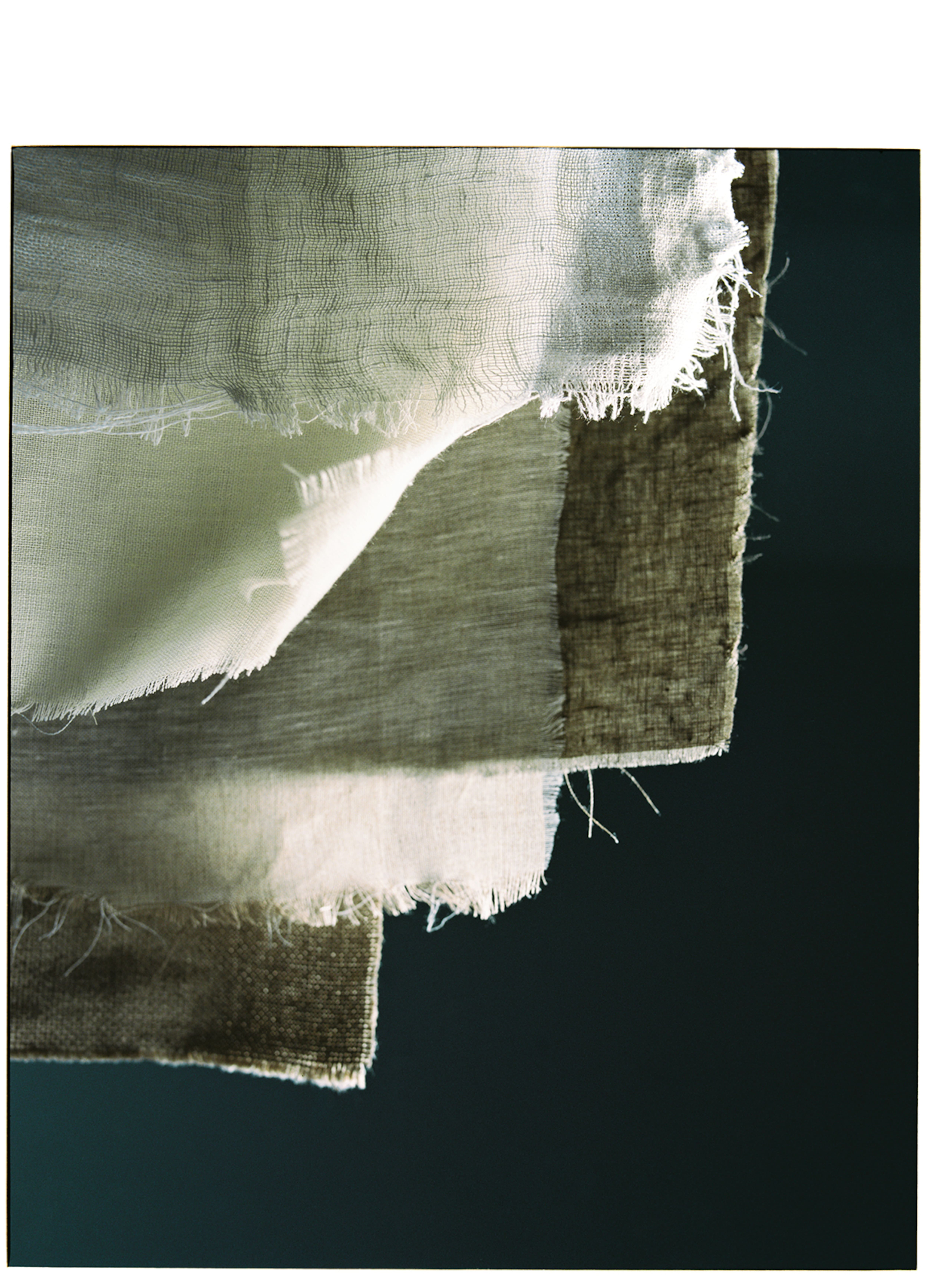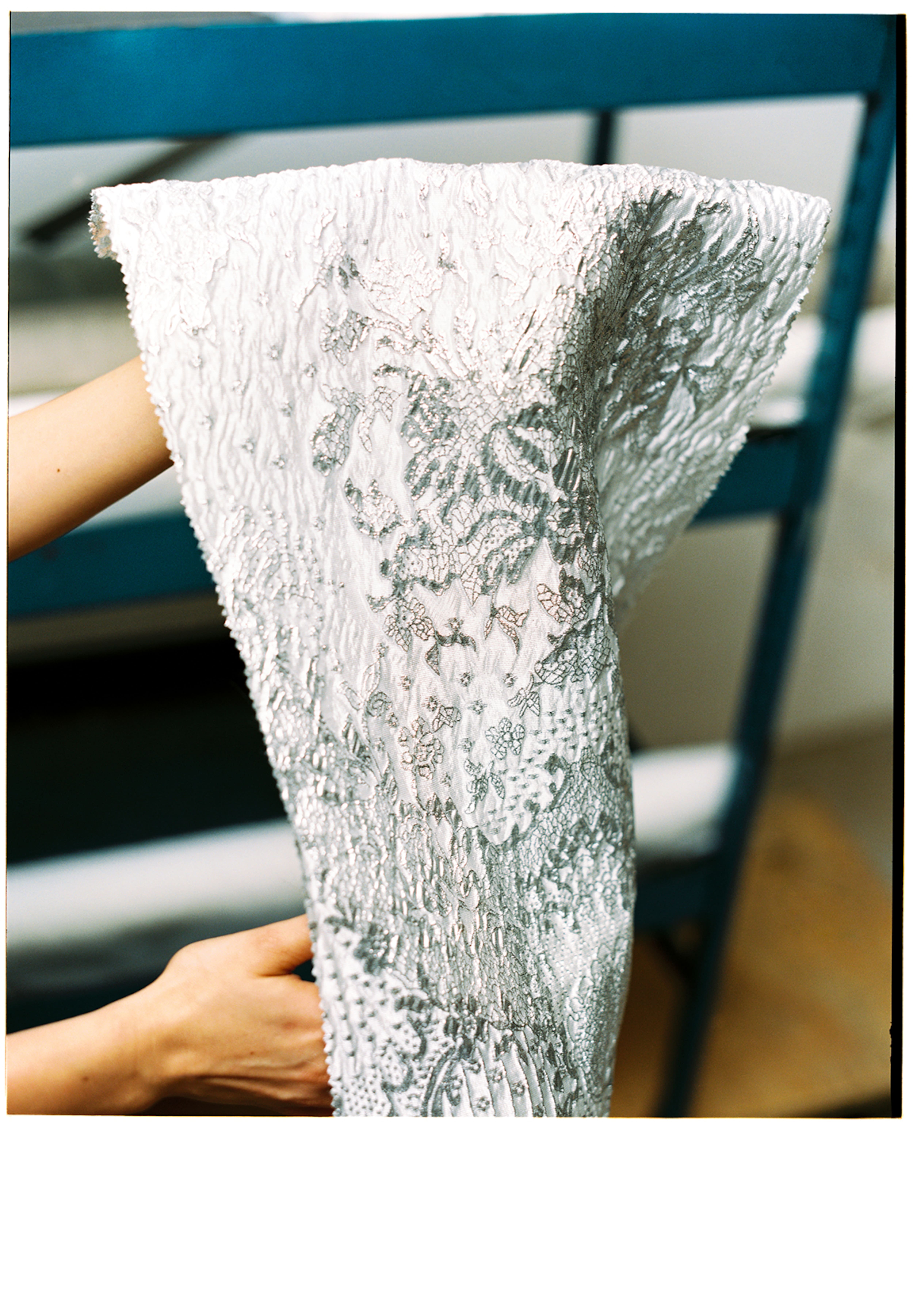
Materials
The production of new clothes has an impact on the planet, regardless of what materials are used. Still, the choice of materials makes a big difference. For a company of our size, this means that our choices and actions can change the textile industry quite profoundly. For you, there’s an opportunity to make an informed decision on what to buy. Here you can read about some of the materials we use most often in our garments and accessories.

Cotton
Cotton is a soft and breathable natural material. But its processing can be problematic, for both the planet and people. How it is farmed, the conditions under which it is picked, water usage during cultivation, processing and all matter.

Almost 60% of our materials are made of cotton, which fall into these three categories:
Recycled
11% of our cotton is recycled from old textiles and excess material from production (that has been shredded into fibres, spun into new yarn, and woven into new fabrics). All our recycled cotton is traceable, and the process is inspected by a third-party organization.
Organic
Almost 12% of our cotton is organic. It is grown without synthetic chemicals and contains no genetically modified organisms (GMOs). We are one of the world’s biggest users of organic cotton. All our organic cotton is traceable, and the process is inspected by a third-party organization.
Better Cotton
The remainder of our cotton is sourced through Better Cotton. Better Cotton are a non-profit organization that helps cotton growers convert to farming practices that offer long-lasting economic, environmental, and social benefits, both on their farms and in their local communities.
This type of cotton is sourced via a system of mass balance, meaning cotton from Better Cotton farmers may be mixed with conventional cotton in the manufacturing process. Cotton from this program is therefore not physically traceable. By sourcing through Better Cotton, we are funding a global initiative that enables the organization’s training to reach more farmers and have a more profound impact.

Why isn’t all our cotton organic?
The global demand for organic cotton is bigger than the current supply and scaling up the production of organic cotton takes time. H&M Group are a founding member of an industry initiative called the Organic Cotton Accelerator, which supports farmers in growing organic cotton profitably, improves the quality of the cotton seed for local markets and works with innovation to further strengthen the supply and integrity of organic cotton.

Linen
Linen is a soft, strong, and breathable natural material made from the flax plant. Flax is resilient, can grow in poor soil and uses less water to produce than conventional cotton.

Polyester
Polyester is a very durable synthetic material that is derived from fossil fuels. We use it in some garments, such as performance materials in sportswear. Overall, 23% of the material we use is polyester. 78% of it is recycled.

Polyamide
Polyamide is a strong and stretchy material that is often used to make underwear and tights, as well as outerwear. Like polyester, it is a synthetic material derived from fossil fuels. 17% of the polyamide we use is recycled. It is mainly sourced from materials like old fishing nets and carpets, as well as by-products from production.

Viscose
Viscose is a regenerated cellulose fibre that is usually made from wood, though it can also be derived from other sources, such as agricultural, post-consumer and industrial by-products. Livaeco™ and Lenzing Ecovero™ make up 76% of the viscose we use. These are trademarked viscose alternatives to conventional viscose. They derive their fibres from independently certified forests that are managed according to strict environmental, social and economic standards.

Lyocell
Like viscose, lyocell is a cellulose fibre. We mainly use TENCEL™ lyocell fibres. These fibres are strong and durable, support a natural dry feeling through moisture absorption and are naturally soft. TENCEL™ lyocell is a trademark of Lenzing AG and is produced through a process which reuses 99,8% of the water and chemicals used.

Wool, leather, down and other animal fibres
Responsible Wool Standard* is a certification owned by Textile Exchange that requires certified farmers to meet standards for animal welfare, land preservation and working conditions. Look for the RWS label on our products to identify items made with responsibly sourced wool.
All our down is either recycled or Responsible Down Standard*–certified. By the end of 2025, all our down will be recycled.
Almost all of our cashmere is sourced through the Good Cashmere Standard®**, which is owned by the Aid by Trade Foundation. It sets requirements on animal welfare, land management and herders’ working conditions.
We are members of the Leather Working Group, and 83% of our leather products are produced with chrome-free tanned leather.
* Read more about these certification schemes here: Home Page - Textile Exchange Our Textile Exchange ID number is TE-00047206


Material innovations
Innovation within materials will play an important role in the future of fashion, and we are working actively to support new ideas. Our hope is to help scale these ideas for the benefit of the entire fashion industry. The initiatives below are either co-owned or invested in by H&M Group Ventures.
Syre aim to scale textile-to-textile polyester recycling. This is a more resource-effective alternative to regular recycled polyester, which is primarily sourced from PET bottles.
Galy produce lab-grown cotton, a breakthrough that could reduce reliance on conventional cotton, which comes with a greater impact.
Ambercycle separate fibres in end-of-life textiles and creates new raw materials.
Infinited Fiber turn textile by-products into a new fibre, called Infinna. It is like cotton with a soft and natural look and feel.
Colorifix have developed a biological process that replaces the use of harmful chemicals to dye textiles.
